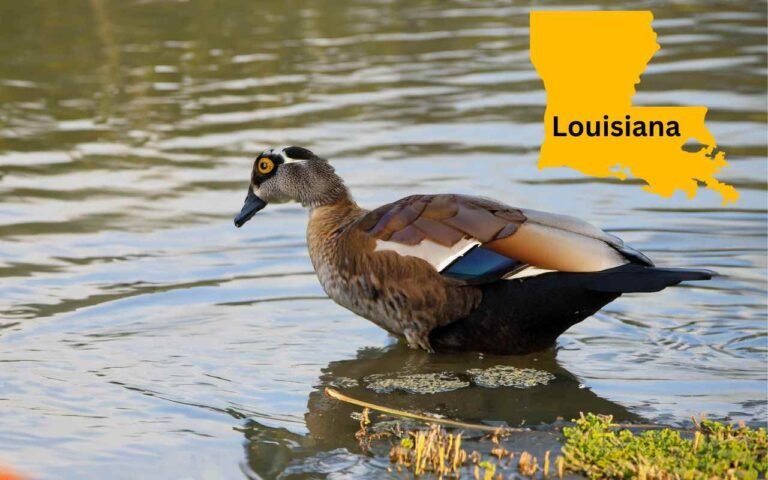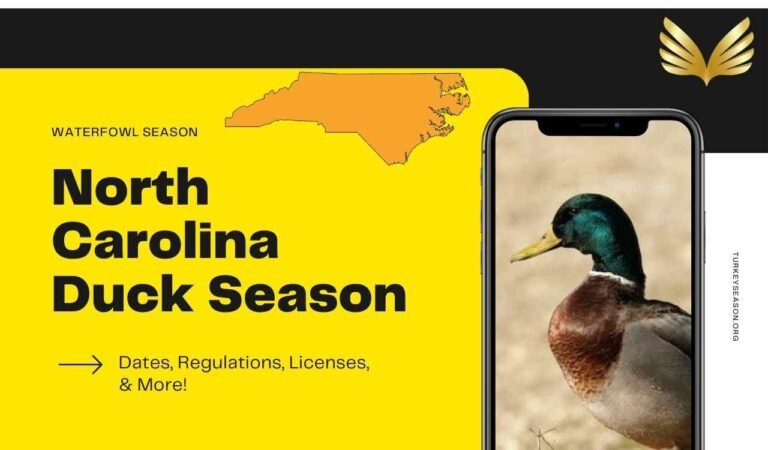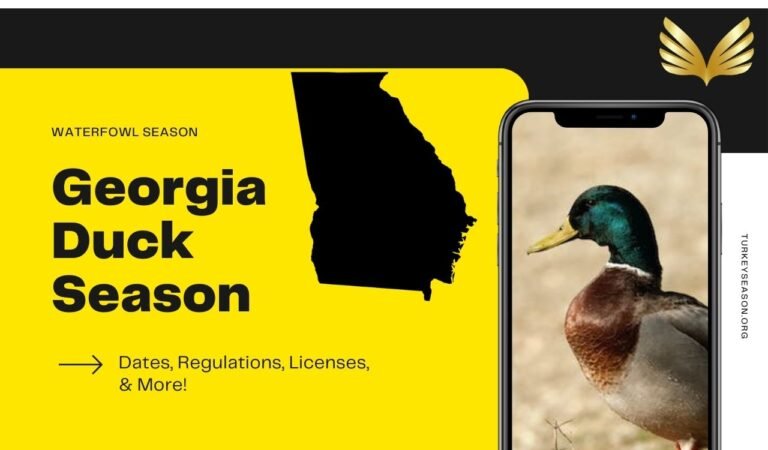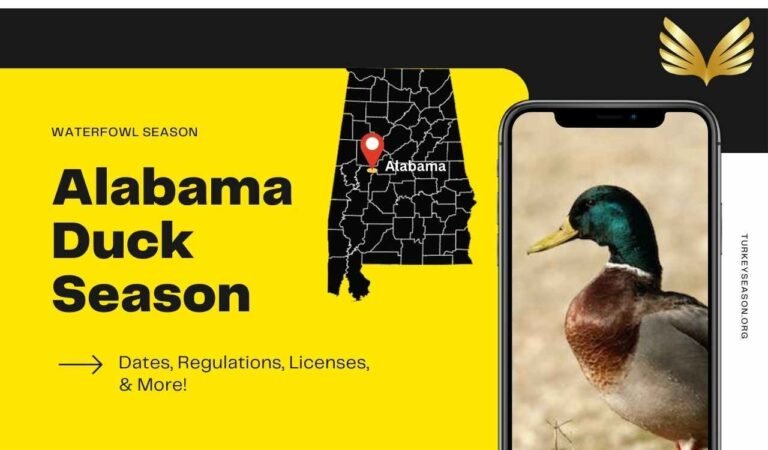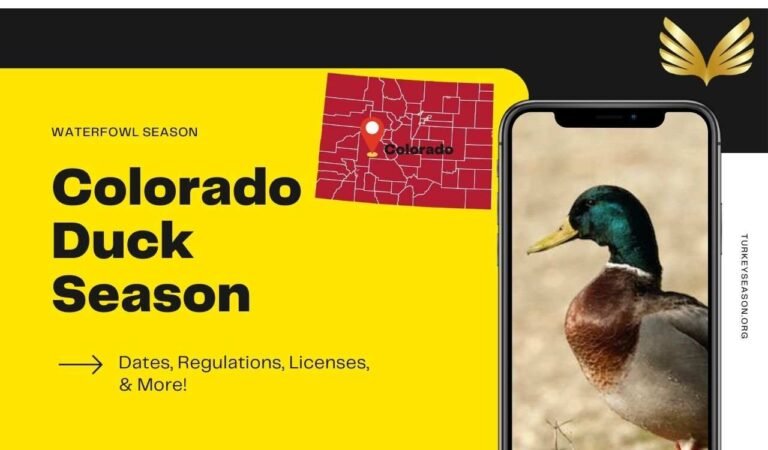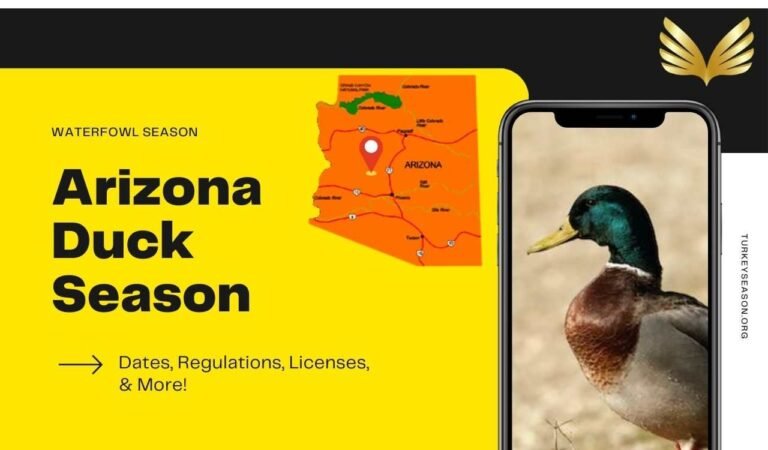Kansas Duck Season 2023: KS Duck Hunting Guide [Dates, Rules, Limits & More]
Outdoor lovers and waterfowl hunters are planning an exciting Kansas trip as October approaches. Duck hunters have traditionally visited Kansas for its diversified landscapes, numerous wetlands, and large waterfowl populations. Kansas Duck Season 2023 will allow hunters to enjoy nature, test their abilities, and have lasting experiences. Join us as we discuss the upcoming Kansas Duck Season. Prepare for a crazy adventure!
Kansas Duck Season
| Species | Season Start Date | Season End Date | Daily Limit | Possession Limit |
|---|---|---|---|---|
| Ducks (High Plains Unit) | 10/8/2022 | 1/1/2023 | 6 | 3 times the daily limit |
| Ducks (High Plains Unit) | 1/20/2023 | 1/29/2023 | 6 | 3 times the daily limit |
| Ducks (Low Plains Early Zone) | 10/8/2022 | 12/4/2022 | 6 | 3 times the daily limit |
| Ducks (Low Plains Early Zone) | 12/17/2022 | 1/1/2023 | 6 | 3 times the daily limit |
| Ducks (Low Plains Late Zone) | 10/29/2022 | 1/1/2023 | 6 | 3 times the daily limit |
| Ducks (Low Plains Late Zone) | 1/21/2023 | 1/29/2023 | 6 | 3 times the daily limit |
| Ducks (Low Plains Southeast Zone) | 11/5/2022 | 1/1/2023 | 6 | 3 times the daily limit |
| Ducks (Low Plains Southeast Zone) | 1/14/2023 | 1/29/2023 | 6 | 3 times the daily limit |
One thing to keep in mind is that you are only permitted a total of six ducks, which may be any combination of three wood ducks, two redheads, two canvasbacks, one scaup, and one pintail, plus no more than five mallards (only two of which can be hens).
Other Migratory Birds Season
| Species | Season Start Date | Season End Date | Daily Limit | Possession Limit |
|---|---|---|---|---|
| Teal (High Plains Zone) | 17-Sep | 25-Sep | 6 teal | 18 teal |
| Teal (Low Plains Zone) | 10-Sep | 25-Sep | 6 teal | 18 teal |
| Mergansers | Same as duck seasons | Same as duck seasons | 5, including no more than 2 hooded mergansers | 15 |
| Coots | Same as duck seasons | Same as duck seasons | 15 | 45 |
| Youth Waterfowl Season (High Plains Unit) | 1-Oct | 2-Oct | - | - |
| Youth Waterfowl Season (Low Plains Early Zone) | 1-Oct | 2-Oct | - | - |
| Youth Waterfowl Season (Low Plains Late Zone) | 22-Oct | 23-Oct | - | - |
| Youth Waterfowl Season (Southeast Zone) | 29-Oct | 30-Oct | - | - |
| Canada Geese | 29-Oct | 30-Oct | 6 (including Brant) | 18 |
| Canada Geese | 2-Nov | 12-Feb | 6 (including Brant) | 18 |
| White-fronted Geese | 29-Oct | 1-Jan | 2 | 6 |
| White-fronted Geese | 21-Jan | 12-Feb | 2 | 6 |
| Light Geese | 29-Oct | 30-Oct | 50 | No limit |
| Light Geese | 2-Nov | 12-Feb | 50 | No limit |
| Light Geese, Conservation Order | 13-Feb | 30-Apr | Unlimited | Unlimited |
| Sandhill Crane (Central Zone) | 9-Nov | 5-Jan | 3 | 9 |
| Sandhill Crane (West Zone) | 15-Oct | 11-Dec | 3 | 9 |
Duck Hunting Season Regulations in Kansas
Kansas protects duck species and balances populations. Ducks have a six-per-day bag limit. Hunters may take five mallards, but only two can be female. Three wood ducks, redheads, canvasbacks, scaup, and pintail are also allowed daily.
- Kansas ducks have a three-times-daily bag restriction. Hunters may have 18 ducks, following species and sex limits.
- Kansas allows bow and arrow, falconry, and 10-gauge shotguns for waterfowl hunting. Shotguns can only store three shells.
- Migratory game birds cannot be taken by traps, snares, fishhooks, nets, rifles, handguns, shotgun slugs, shotguns above 10 gauge, poison, narcotics, or explosives. Sink boxes and artificially amplified or recorded bird cries are likewise forbidden.
- Kansas offers youth waterfowl seasons. Under adult supervision, 15-year-olds may hunt waterfowl for two days. Adults cannot hunt during the youth season.
- Hunters must discover and retain crippled or slain wildlife until they are cleaned, eaten, brought home, delivered to a taxidermist or processor, or given to someone else.
- Hunters must tag their birds with their address, number, species, and date of death. At least one fully-feathered wing or head must be attached while carrying captured ducks.
- The package must be labeled with the sender, receiver, and quantity of birds per species to transport migratory game birds.
- Freshly killed migratory game birds cannot be received, held, or given as a gift unless they bear a tag. The hunter’s address, the quantity and kind of birds, and the date they were taken must be on the tag, which must be signed.
- Any injured waterfowl that becomes your property must be promptly dispatched and put in your daily bag.
- It is acceptable to employ mechanically or electronically controlled decoys that do not make bird noises.
- Waterfowl hunting baiting restrictions are vital to grasp. Hunters cannot distribute salt, grain, or other feed that might attract ducks. Hunting over a baited area is prohibited for 10 days.
- Waterfowl must be transported with one completely feathered wing or head.
- Waterfowl management requires band reporting. Hunters should contact 1-800-327-2263 or visit the website to report bands they see. Band data track harvest rates, distribution, and time, aiding control.
- Duck identification is crucial for harvest management. Hunters should utilize resources to identify duck species before shooting.
- Waterfowl management programs and laws benefit from population and harvest data. Websites provide Central Flyway and Kansas hunting statistics.
- Hunters must utilize their game. Crippled or dead animals should be recovered and preserved until processed, devoured, brought home, donated to others, or taxidermies.
KS Duck Hunting Licenses
| License/Stamp | Resident Cost | Nonresident Cost |
|---|---|---|
| Resident General License | $42.50 | $97.50 |
| Resident Landowner/Tenant License | $22.50 | $87.50 |
| Resident Youth License (15 and younger) | $12.50 | - |
| Federal Waterfowl Stamp | - | $26.50 |
| Kansas HIP Stamp | $2.50 | $2.50 |
| Habitat Stamp (Resident) | $5.00 | $10.00 |
Frequently Asked Questions
When does Duck Season in Kansas begin and end?
Each year, the exact dates for the Kansas Duck Season change. Usually, it starts in late October or early November and lasts until the end of January.
What are the Kansas Duck Season bag restrictions?
Each year, the Kansas Duck Season’s bag limitations for ducks are subject to change. Following are the bag limits: A maximum of 5 mallards (only 2 of which are hens), 3 wood ducks, 2 redheads, 2 canvasbacks, 1 pintail, and 1 scaup are allowed every day. Six of any other duck species may be included in the bag.
What permits and stamps are required in Kansas for duck hunting?
Depending on your residence status, a current Kansas hunting license, which may be a resident or nonresident license, is required to hunt ducks in Kansas. Having a Kansas HIP Stamp and a Federal Waterfowl Stamp would be best. An additional stamp for the habitat is needed if hunting on the public territory.
Can youth participate in the Kansas Duck Season?
Yes, the Kansas Duck Season has particular rules for young hunters. Each duck zone has specified days for juvenile waterfowl hunting, which enables young hunters (15 years old and under) to take part under the supervision of an adult. Youth hunters are allowed the same number of bags as adult hunters.
Are there any particular rules or limitations pertaining to waterfowl hunting in Kansas?
Yes, laws are in place to guarantee ethical and sustainable hunting. The use of shotguns that can only store three rounds, the ban on specific hunting techniques (such as trapping or electronic bird calls), and the necessity to try to recover any harvested animal are a few crucial laws.
Where can I obtain data on the number of ducks seen each week in Kansas Wildlife Areas?
You can review the regional waterfowl reports for weekly updates on waterfowl populations in Wildlife Areas throughout the fall and winter. These papers provide insightful data on waterfowl numbers and may aid in organizing your hunting expeditions.
- Louisiana Turkey Season 2026: LA Turkey Hunting [Dates, Regulations, Licenses & More] - January 5, 2026
- Kentucky Turkey Season 2026: Latest Hunting Dates, Regulations & Licenses! - January 5, 2026
- Kansas Turkey Season 2026-2027: Latest Dates, Licenses, and Regulations Now Available! - January 3, 2026

